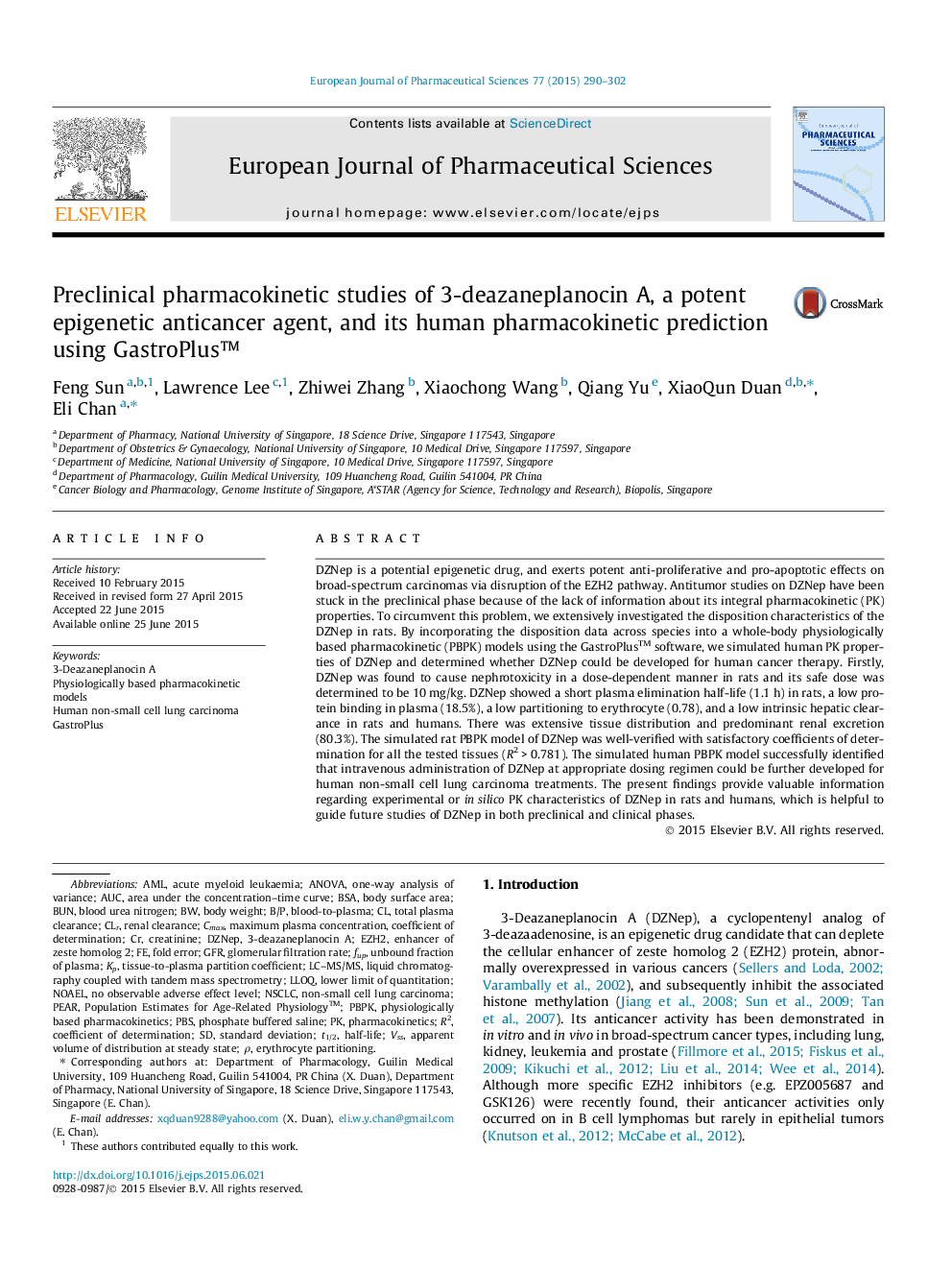| Article ID | Journal | Published Year | Pages | File Type |
|---|---|---|---|---|
| 2480284 | European Journal of Pharmaceutical Sciences | 2015 | 13 Pages |
DZNep is a potential epigenetic drug, and exerts potent anti-proliferative and pro-apoptotic effects on broad-spectrum carcinomas via disruption of the EZH2 pathway. Antitumor studies on DZNep have been stuck in the preclinical phase because of the lack of information about its integral pharmacokinetic (PK) properties. To circumvent this problem, we extensively investigated the disposition characteristics of the DZNep in rats. By incorporating the disposition data across species into a whole-body physiologically based pharmacokinetic (PBPK) models using the GastroPlusTM software, we simulated human PK properties of DZNep and determined whether DZNep could be developed for human cancer therapy. Firstly, DZNep was found to cause nephrotoxicity in a dose-dependent manner in rats and its safe dose was determined to be 10 mg/kg. DZNep showed a short plasma elimination half-life (1.1 h) in rats, a low protein binding in plasma (18.5%), a low partitioning to erythrocyte (0.78), and a low intrinsic hepatic clearance in rats and humans. There was extensive tissue distribution and predominant renal excretion (80.3%). The simulated rat PBPK model of DZNep was well-verified with satisfactory coefficients of determination for all the tested tissues (R2 > 0.781). The simulated human PBPK model successfully identified that intravenous administration of DZNep at appropriate dosing regimen could be further developed for human non-small cell lung carcinoma treatments. The present findings provide valuable information regarding experimental or in silico PK characteristics of DZNep in rats and humans, which is helpful to guide future studies of DZNep in both preclinical and clinical phases.
Graphical abstractThe simulated human PBPK model successfully identified that intravenous administration of DZNep at appropriate dosing regimen could be further developed for human non-smell cell lung carcinoma (NSCLC) treatments.Figure optionsDownload full-size imageDownload high-quality image (112 K)Download as PowerPoint slide
